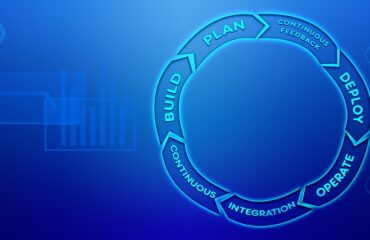Material Requirements Planning (MRP) is one of the most important processes for manufacturers that should be run at the right frequency. With the right MRP, an organization can expect an increase in on-time shipments, lesser inventory carrying costs, lower inventory shortages, and happy customers. Whether it is done through the ERP (Enterprise Resource Planning) system, a Planning System, or on a spreadsheet, it is important to maximize MRP functionality.
What is Material Requirement Planning (MRP)?
MRP is a standard supply planning process that helps businesses, predominantly product-based manufacturers, understand inventory requirements while balancing demand and supply. Businesses use Material Requirement Planning, a subset of supply chain management systems, to resourcefully manage inventory, schedule production and deliver the right products at optimal cost and on time.
Why is MRP important?
MRP helps businesses to know the requirement of inventory to meet the demand, optimize their inventory levels and production schedules. Without these insights, businesses have limited responsiveness and visibility which can result in-
- Ordering inventory in excess can increase the carrying costs and blocks up capital in inventory overhead that could have been used somewhere else.
- Failure to meet demand due to insufficient raw materials resulting in loss of sales, out-of-stocks, and canceled contracts.
- Delayed sub-assembly builds that result in decreased output and increased production cost, disruptions in the production cycle.
Thus, MRP is relevant in many industries from Life Sciences to CPG to create a balance between demand and supply.
How to get MRP right?
Ensure Data Accuracy
It is crucial to understand the validity of data inputs because if not done then MRP efforts get compromised because of poor quality data. Therefore, for MRP to generate accurate reports is to input accurate inventory information from the beginning.
Use Forecasting
Most MRP systems take into account open sales orders or forecasts to calculate demand. Forecasts can be production or sales forecast, either way, MRP uses this information to generate material requirements. The advantages are twofold; the first being businesses can approximate their material requirements further out than the time fence that applies to the sales orders. Second, besides material planning, it will not only help in a production scheduling standpoint but will also aid in the staffing requirements.
Better management of raw materials
For operations to stay on track, businesses need to manage raw materials properly. Excess of raw materials especially when they are perishable items or have limited shelf life can lead to waste and cost overruns.
MRP helps in identifying which raw materials will be in excess and how accurate orders can be created while eliminating waste.
Stay up-to-date
MRP is driven by the required dates of the expected demand. When it comes to open sales orders, open purchase orders or even open production orders staying up to date is a must. If not, MRP will indicate to order materials well in advance of when you actually need them to meet the immediate demand of past-due sales orders.
Monitoring Vendor Performance
Changing vendors is not easy, but monitoring their performance should be a core business practice. Conducting frequent audits and reviews of historical transactions between vendors is important. This is required to check how they are in terms of anticipated lead time vs. the actual lead time. Based on this information MRP can be improved quickly.
Understanding operations capacity
Understanding the various production constraints of the work centers of your business is a must. MRP should be able to create an anticipated production schedule based on factors like present supply and forecasted demand, and employees scheduled. However, it is also important that capacity and space is also taken into account. Manufacturing more inventory that can’t be shipped or stored is not an ideal scenario for most businesses.
Optimizing MRP is the key to running businesses efficiently
MRP systems enable businesses to plan and schedule production efficiently. It ensures that that materials move through the work order quickly and customer orders are fulfilled on time. An MRP system that is integrated across an organization not only eliminates manual processes but businesses have to spend less time on building production flows to understand when and where product availability is required.
However, just like any other Supply Chain process, MRP is as good as the data which is put into it. Therefore, the better the business understands and documents its processes, the better Material Requirement Planning system can serve them. Inputting correct inventory availability, subassembly completion time, lead-time from vendors, and waste calculations is a must. Businesses must run a robust MRP to achieve substantial operational and profitability gains.





